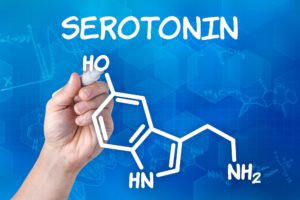 When someone speaks of their brain injury from benzodiazepines, what exactly do they mean? Evidence linking benzodiazepines – among other centrally acting pharmaceuticals – to brain damage exists in the mainstream medical literature. This is not to be confused with a Traumatic Brain Injury (TBI), where blunt-force trauma is sustained by the brain and easily viewed with imaging studies. Functional central nervous system changes do not involve blunt force trauma.
When someone speaks of their brain injury from benzodiazepines, what exactly do they mean? Evidence linking benzodiazepines – among other centrally acting pharmaceuticals – to brain damage exists in the mainstream medical literature. This is not to be confused with a Traumatic Brain Injury (TBI), where blunt-force trauma is sustained by the brain and easily viewed with imaging studies. Functional central nervous system changes do not involve blunt force trauma.
Though its incidence is likely to be relatively rare and it is seldom talked about in recovery communities, W-BAD acknowledges functional brain changes to be a possible complication of benzodiazepine dependency and withdrawal for the purposes of awareness and pushing for progress in researching it further. With the hopes of someday understanding it, so it may be addressed properly.
The early work of Professor Malcolm H. Lader and his colleagues documented the first indication of anatomical brain changes associated with benzodiazepines using computed axial tomography (CAT scan), which revealed abnormalities in at least half of the patients examined in the study, with two patients having definite cortical atrophy. The patients were either dependent on or experiencing a protracted withdrawal syndrome from, benzodiazepines. The results warranted further research as they were suggestive of brain damage [1].
Functional brain changes, such as those observed in organic brain syndrome (OBS) or organic brain disease (OBD) are documented in the literature to be caused by sedative-hypnotics and their respective withdrawal syndromes. OBS is a condition characterized by mental and/or cognitive function impairments that are physiological in nature – the symptoms occur without a psychiatric pathophysiology. Benzodiazepine dependency and withdrawal, alcoholism, and other centrally acting drugs are documented to be among its many possible causes [2], [3].
Perceptual and sensory disturbances suggest a hyperexcitable central nervous system while recovering from benzodiazepine withdrawal. Problems with balance, hearing, tinnitus, and hypersensitivity to sound suggests possible vestibular involvement – the part of the brain that’s connected to the inner and middle ear. But other sensory hypersensitivies, such as to smell and light, can happen during withdrawal of these medicines. To be understood, these phenomena require more research, but the documentation of their existence adds to the overwhelming amount of evidence that medication dependence and discontinuation (withdrawal) can significantly impact functional brain activity on a cellular level.
In 2011, Professor C. Heather Ashton made a public update to include supplemental information regarding brain damage to “Benzodiazepines: How They Work and How to Withdraw” which has been modified in 2012 and 2013. In the update, she wrote that any brain damage caused by benzodiazepines and/or their withdrawal syndrome is more of the functional variety than anatomical, involving the down-regulation of GABAA neuroreceptors in the central nervous system, where the receptor sites themselves become fewer and/or desensitized as a result of the presence of benzodiazepine continually occupying the receptor. It is theorized that the brain and central nervous system, in an attempt to reach a state of homeostasis and stability, will naturally oppose the constant presence of a drug in this way. These types of brain changes may be more apparently observed in more modern, more sophisticated functional brain activity studies such as fMRIs or qEEGs. It is unknown whether any potential brain and central nervous system changes induced by benzodiazepines can become permanent, however, anecdotal evidence suggests that they are not. Further research would be required to determine this. [4]
There are other, non-benzodiazepine pharmaceutical medications that are well-known to cause functional brain and central nervous system damage. In particular, antipsychotics, antiemetics, treatments for Parkinson’s disease and dopaminergic pharmaceuticals are especially known to possibly cause movement disorders during or after their treatment. These movement disorders are known as Tardive Dyskinesia (TD), akathisia, dystonia among others – “tardive” meaning that the onset may occur long after cessation of the drug. TD is well-known to be potentially permanent in some cases. [5] Atrophic brain changes have been observed after long-term treatment with antipsychotics, apparently worsening mental illness in some cases. [6] Awareness of this risk became more heavily documented in the literature as more people were presenting with more visibly obvious signs and symptoms to neurologist’s offices. Movement disorder signs are readily recognizable, even in non-verbal patients, as they are so obvious and specific in their presentation. As such, highly dopaminergic drugs have fallen out of use even in psychiatry. High-profile celebrity cases of movement disorders such as Michael J. Fox, who suffers from Parkinson’s disease and struggled with his levodopa (dopaminergic drug) treatment for it in this way, have helped bring awareness to the problem of movement disorders associated with pharmaceuticals. [8]
SEROTONIN SYNDROME
 SSRIs and SNRIs are typically used in psychiatry for anxiety and depressive ‘disorders’ – diagnosed as ‘mental illness’ by DSM (Diagnostic and Statistical Manual of Mental Disorders) criteria and which often involve the use of benzodiazepines as well. Uncomfortable “start-up” side effects of these drugs result from direct serotonergic effect and these drugs are stimulating to the central nervous system. Since there is no scientific measure available to determine whether or not someone actually has a “serotonin deficiency” or “chemical imbalance,” for which SSRIs and SNRIs would be indicated, using these drugs for such a thing is gradually becoming increasingly controversial. Additionally, a potentially severe and life-threatening but reversible condition known as Serotonin Syndrome can occur with SSRIs and SNRIs [10] and is characterized by symptoms of serotonin toxicity (too much serotonin in the brain) resulting in overactive nervous systems. Ironically, treatment of Serotonin Syndrome typically includes benzodiazepines, along with discontinuation of the serotonergic drug and/or other measures. Emergency departments are often urged to be aware of the signs and symptoms of Serotonin Syndrome by using the abbreviation “CAN,” which stands for:
SSRIs and SNRIs are typically used in psychiatry for anxiety and depressive ‘disorders’ – diagnosed as ‘mental illness’ by DSM (Diagnostic and Statistical Manual of Mental Disorders) criteria and which often involve the use of benzodiazepines as well. Uncomfortable “start-up” side effects of these drugs result from direct serotonergic effect and these drugs are stimulating to the central nervous system. Since there is no scientific measure available to determine whether or not someone actually has a “serotonin deficiency” or “chemical imbalance,” for which SSRIs and SNRIs would be indicated, using these drugs for such a thing is gradually becoming increasingly controversial. Additionally, a potentially severe and life-threatening but reversible condition known as Serotonin Syndrome can occur with SSRIs and SNRIs [10] and is characterized by symptoms of serotonin toxicity (too much serotonin in the brain) resulting in overactive nervous systems. Ironically, treatment of Serotonin Syndrome typically includes benzodiazepines, along with discontinuation of the serotonergic drug and/or other measures. Emergency departments are often urged to be aware of the signs and symptoms of Serotonin Syndrome by using the abbreviation “CAN,” which stands for:
C – cognitive changes
- agitation
- confusion
- insomnia
- hallucinations
A – autonomic changes
- tachycardia
- hypertension (high blood pressure)
- high fever
- mydriasis (dilated pupils)
- sweating
N – neuromuscular changes
- tremor
- clonus
- seizures
- hyperreflexia
- muscle rigidity
Symptoms may also include signs of gastrointestinal motility disturbance – nausea, vomiting, and diarrhea. This phenomenon is more likely to occur when two serotonergic drugs are mixed, however, it can occur with just one serotonergic drug, and it can occur at any time during treatment with said drug. However, it usually occurs when first taking the drug or increasing the dosage [9]. Many drugs which are not used as psychopharmaceuticals, such as triptans, ondansetron (Zofran), an antiemetic and tramadol (Ultram), a pain reliever, among others, which have serotonergic properties can also lead or contribute to the development of Serotonin Syndrome. MAOIs and multiple other medications can be serotonergic, so be aware that combining them happens more frequently than one might think.
As SSRIs and SNRIs are actually central nervous system stimulants, exposing a central nervous system that has been down-regulated by sedative dependence and/or withdrawal to them has the potential to be very problematic. Careful consideration of any drug’s pharmacological effects should always be considered if starting a new drug in the benzodiazepine affected patient.
Finally, it has been suggested in the mainstream medical literature that discontinuation or withdrawal of antipsychotics after long-term use has been associated with the onset of psychotic symptoms, even in people who had never had a pre-existing psychotic disorder. [7]
For these reasons, most medical professionals who have benzodiazepine awareness do not usually recommend treatment with yet more highly psychoactive, brain-altering drugs to the recovering central nervous system of a benzodiazepine-sensitized patient. This is highlighted in the British National Formulary’s 2013 Benzodiazepine Guidance:
The addition of beta-blockers, antidepressants and antipsychotics should be avoided where possible.
CITATIONS
- http://www.benzo.org.uk/amisc/lader4.pdf
- Khan A, Joyce P, Jones AV (August 1980). “Benzodiazepine withdrawal syndromes”. N. Z. Med. J. 92 (665): 94–6. PMID 6107888.
- Luderer HJ, Schulz M, Mayer M (November 1995). “[Long-term administration of benzodiazepines–disease follow-up, sequelae, treatment. A retrospective clinical record evaluation of 194 patients]”. Psychiatr Prax (in German). 22 (6): 231–4. PMID 8570753.
- http://www.benzo.org.uk/ashsupp11.htm
- http://emedicine.medscape.com/article/1151826-overview
- http://ajp.psychiatryonline.org/doi/full/10.1176/appi.ajp.2013.13030413
- http://psychrights.org/Research/Digest/NLPs/actadrugwith.pdf
- https://www.michaeljfox.org/understanding-parkinsons/living-with-pd/topic.php?dyskinesia
- http://emedicine.medscape.com/article/821737-clinical
- http://www.medscape.com/viewarticle/733706